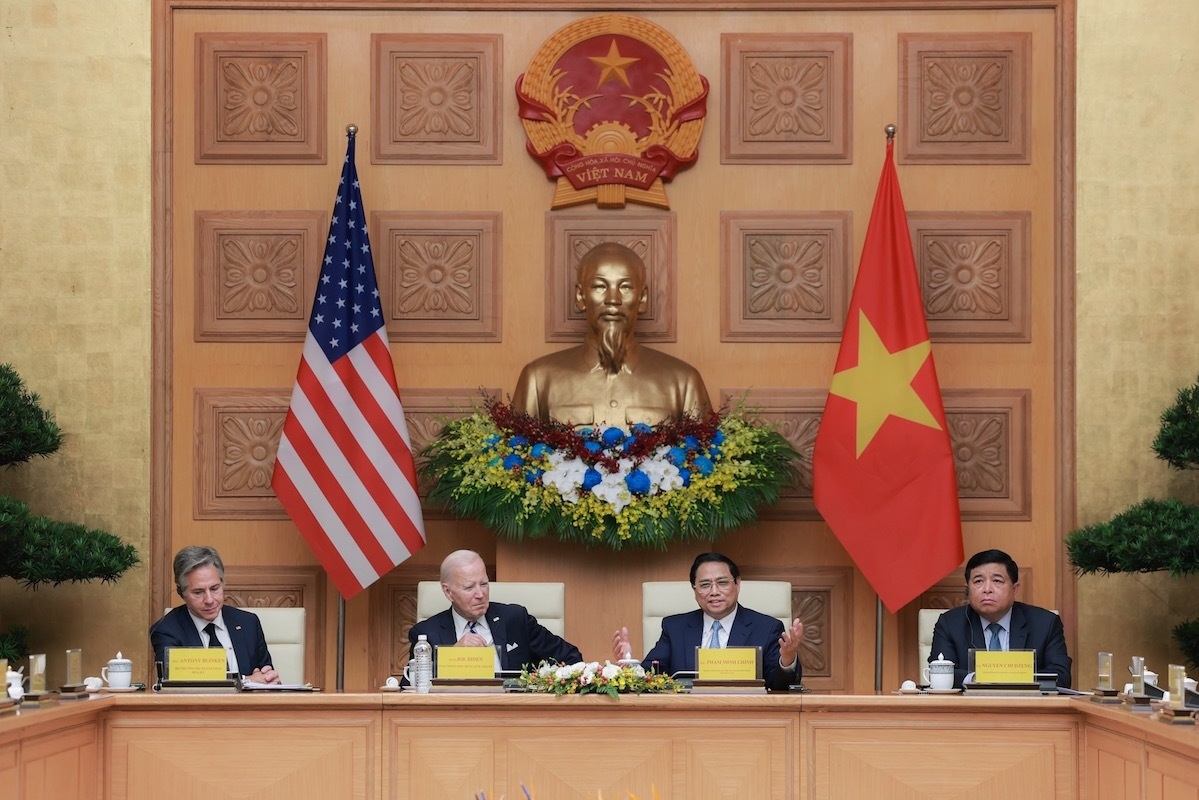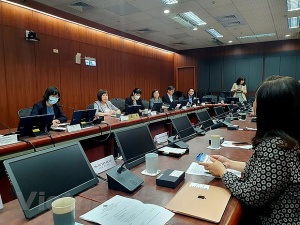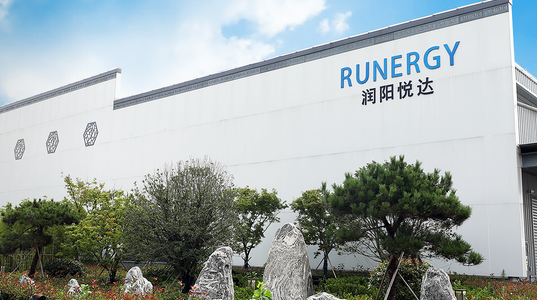Vietnam and US companies collaborate on semiconductors and innovation
 |
On the morning of September 11, Prime Minister Pham Minh Chinh and US President Joe Biden both attended the high-profile Vietnam-US Investment and Innovation conference. This was a pivotal moment during President Biden's state visit to Vietnam.
PM Chinh remarked, "One of the primary objectives of President Biden's visit is to foster Vietnam's economic growth, especially in terms of technology and innovation."
He added, "These areas, combined with investment, will be the new pillars of the Vietnam-US Comprehensive Strategic Partnership."
He also expressed hope that businesses from both nations would prioritise sci-tech investments, especially in the digital transformation, semiconductor industries, green growth, renewable energy, climate change mitigation, and the circular economy.
Highlighting the importance of this collaboration, President Biden stated, "This is a pivotal moment for both countries to boost their relations across every sector and bring about mutual prosperity."
He continued, "The US will support Vietnam with semiconductor technology, the green transition, and human resources training, allowing it to delve deeper into both regional and global value chains."
In a bid to capitalise on the opportunities for collaboration between US and Vietnamese companies, Vietnam's Minister of Planning and Investment Nguyen Chi Dung identified electronics, semiconductors, financial centres, innovative reforms, renewable energy, and new energy sources like hydrogen as prime sectors.
He said, "These are the realms where Vietnamese businesses can integrate more profoundly into global value chains and where US companies, with their notable strengths, can invest in Vietnam."
Furthermore, Minister Dung proposed stronger investment from renowned US semiconductor corporations, namely Intel, Amkor, Marvell, and Global Foundries, among others. He envisioned these entities building research and development centres in Vietnam, leading to the design of new semiconductor products.
He also encouraged Vietnamese enterprises to amplify their investments in the US, while simultaneously enhancing their capacities and capital to integrate into global supply chains.
Furthermore, he emphasised, "The Ministry of Planning and Investment will facilitate both US and Vietnamese businesses to invest successfully."
Trade between the two nations reached nearly $124 billion last year, marking a staggering 275-fold increase over 27 years. The US remains Vietnam's most significant export market and its second-largest trading partner. Conversely, Vietnam ranks as the US' seventh-largest global trading partner and the most prominent within ASEAN.
 | Taiwan's semiconductor companies eye Vietnam for manufacturing, but obstacles persist Taiwanese investors see Vietnam as a manufacturing destination for semiconductor production, yet challenges still hinder the full participation of Vietnamese businesses in the chip manufacturing process. |
 | Runergy pumps $293 million into silicon and semiconductor plant Solar power titan Runergy has announced a $293 million investment into a silicon and semiconductor manufacturing facility in Vietnam's Southeast Nghe An Economic Zone, a move set to bolster Vietnam's burgeoning tech sector. |
| Vietnam to train up to 50,000 semiconductor engineers At the monthly government meeting on August 5, Prime Minister Pham Minh Chinh tasked the Ministry of Planning and Investment (MPI), the Ministry of Information and Communications, the Ministry of Education and Training, and the Ministry of Science and Technology to develop a plan to train between 30,000 and 50,000 engineers and 100 experts in digital transformation and manufacturing semiconductors. |
| Semiconductor groups go all-out with local investment Vietnam’s semiconductor potential is being bolstered by the development of manufacturing complexes and related capabilities. |
What the stars mean:
★ Poor ★ ★ Promising ★★★ Good ★★★★ Very good ★★★★★ Exceptional
Related Contents
Latest News
More News
- Ho Chi Minh City backs $2 billion AI data centre with dedicated task force (January 06, 2026 | 08:43)
- PM sets January deadline for high-speed rail consultant (January 06, 2026 | 08:40)
- New decree spurs on PPP implementation (December 31, 2025 | 19:01)
- Global alliance develops $1 billion AI data centre network in Vietnam (December 30, 2025 | 10:08)
- Standing out in the Chinese outbound investment wave (December 29, 2025 | 10:29)
- Bright spots obvious in foreign investment mission (December 29, 2025 | 09:00)
- Ho Chi Minh City hits $8.37 billion in FDI (December 29, 2025 | 08:28)
- Vietnam and UK cooperation backs finance talent for IFCs (December 27, 2025 | 16:31)
- Global partnerships key to Vietnam’s IFC development (December 26, 2025 | 16:18)
- Vingroup pulls out of bid to invest in North-South high-speed railway (December 26, 2025 | 11:42)

 Tag:
Tag:


















 Mobile Version
Mobile Version